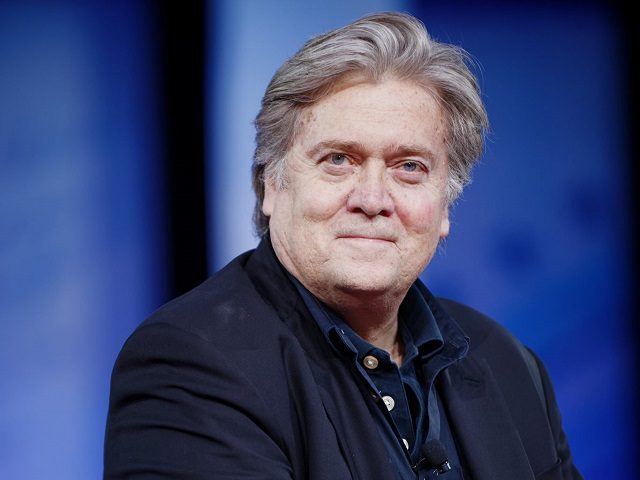White House chief strategist Steve Bannon’s plan to raise the top income tax rate paid by America’s highest earners may garner support even among very conservative Republican lawmakers.
Bannon has told associates that he supports creating a new top rate of 44 percent for Americans with very high incomes. The exact level of income that would trigger the new rate could be from $1 million to $5 million. Even if the threshold was set at just $1 million, when coupled with the Trump administration’s previously announced plans to replace the current seven tax rates with three and eliminate the minimum alternative tax, nearly all Americans would still receive an overall tax cut.
The reason a higher top rate does not necessarily amount to a tax rate on even wealthy Americans is that they would be offset to cuts to the lower brackets. So if the current 15 percent rate, which applies income between $18,551 and $75,000 from married couples filing jointly, were compressed down to the 15% bracket, the first $50,000 of income would have a tax bill of around $1,900, an effective tax rate of 3.6 percent. That’s a huge cut for a family earning $50,000, which would face a tax bill of around $6,500, a tax-rate of around 13.5 percent.
But those with more income would also benefit from that cut, as they would if the 33 and 28 percent brackets were compressed into the 25 percent bracket. As a result, even if the new top rate were triggered at around $1 million, most Americans would face a lower or unchanged effective tax rate until they earned around $5 million in income.
This math may make it easier to sell to Republicans lawmakers, according to conversations with current and former Republican policymakers.
Perhaps even more importantly, however, other changes in the tax code might make the higher rate acceptable even to Republicans and conservatives who consider themselves supply-siders. Suppy-side economics holds that it is the marginal tax rate–what a taxpayer pays if they earn an extra dollar–that matters the most, which in the past has resulted in supply-siders opposing hikes to the top rate. They say the higher taxes on additional earnings discourage work and investment.
But much of the weight of this objection comes from the effect on small and medium business, often organized as tax-pass through vehicles whose owners pay the personal income tax rate on their profits. Under the Trump administration’s April tax proposal, however, these profits would be taxed at a much lower rate of 15 percent. So these businesses would be exempt from the new 44 percent rate, which would fall only on individuals and families who earn those high levels of income as wage income.
“The principal reason a higher rate hurts the economy is the effect on business income. Excluding this changes the calculation significantly,” said Phil Kerpen of American Commitment, a leading free-market policy think tank. “It gives us a reason to think about the top rate differently.”
While Capitol Hill lawmakers and staffers are still unwilling to publicly endorse the idea, several echoed Kerpen’s thoughts in interviews.
“If the higher top rate makes cutting business taxes easier, that’s could be a good trade,” said one Republican official.
“At that level of income, you are talking about a very few, elite athletes, movie-stars, investment bankers and lawyers paying a bit more in taxes,” a Republican tax policy analyst said. He asked not to be named.
Republicans at all levels in Washington D.C. are still very hesitant to endorse any tax hikes on the record. Several pointed out that the pledge to oppose any rise in marginal rates that almost all Republican lawmakers have signed could be a significant obstacle.

COMMENTS
Please let us know if you're having issues with commenting.